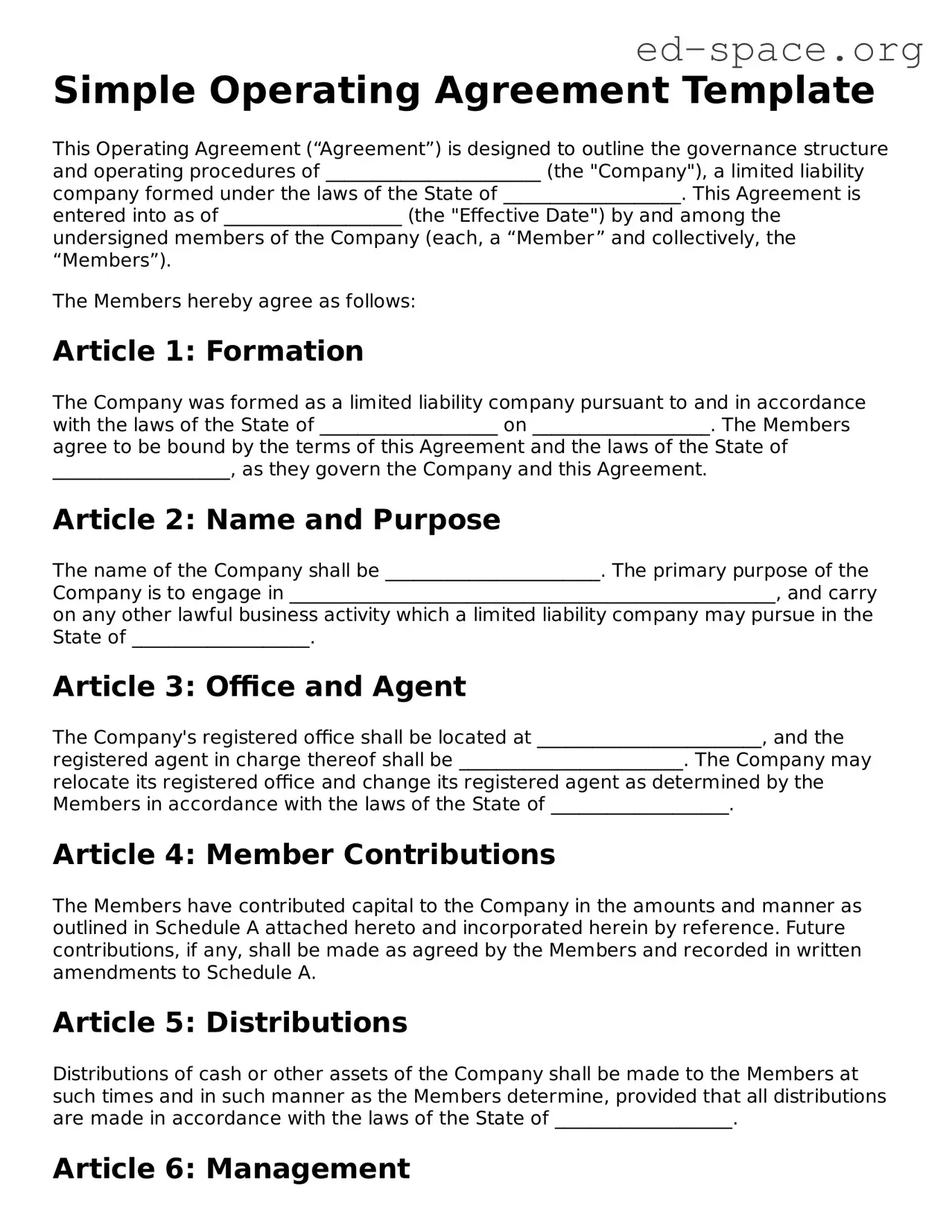Simple Operating Agreement Template
This Operating Agreement (“Agreement”) is designed to outline the governance structure and operating procedures of _______________________ (the "Company"), a limited liability company formed under the laws of the State of ___________________. This Agreement is entered into as of ___________________ (the "Effective Date") by and among the undersigned members of the Company (each, a “Member” and collectively, the “Members”).
The Members hereby agree as follows:
Article 1: Formation
The Company was formed as a limited liability company pursuant to and in accordance with the laws of the State of ___________________ on ___________________. The Members agree to be bound by the terms of this Agreement and the laws of the State of ___________________, as they govern the Company and this Agreement.
Article 2: Name and Purpose
The name of the Company shall be _______________________. The primary purpose of the Company is to engage in ____________________________________________________, and carry on any other lawful business activity which a limited liability company may pursue in the State of ___________________.
Article 3: Office and Agent
The Company's registered office shall be located at ________________________, and the registered agent in charge thereof shall be ________________________. The Company may relocate its registered office and change its registered agent as determined by the Members in accordance with the laws of the State of ___________________.
Article 4: Member Contributions
The Members have contributed capital to the Company in the amounts and manner as outlined in Schedule A attached hereto and incorporated herein by reference. Future contributions, if any, shall be made as agreed by the Members and recorded in written amendments to Schedule A.
Article 5: Distributions
Distributions of cash or other assets of the Company shall be made to the Members at such times and in such manner as the Members determine, provided that all distributions are made in accordance with the laws of the State of ___________________.
Article 6: Management
Management of the Company is vested in the Members. Actions requiring a vote of the Members shall be decided by a majority vote unless otherwise required by this Agreement or applicable state law. Meetings of the Members may be held at such time and in such manner as determined by the Members.
Article 7: Dissolution
Upon the occurrence of any event that renders it illegal or impossible for the Company to continue its business, the Company shall be dissolved in accordance with the laws of the State of ___________________. The assets of the Company shall be distributed first to creditors, including Members who are creditors, to the extent permissible by law, and then to the Members in accordance with their respective interests in the Company.
Schedules and Exhibits
All schedules and exhibits mentioned in this Agreement are an integral part of this Agreement and are incorporated herein by reference.
Signatures
IN WITNESS WHEREOF, the Members have executed this Operating Agreement as of the Effective Date.
_______________________ [Member Name]
_______________________ [Date]
_______________________ [Member Name]
_______________________ [Date]
